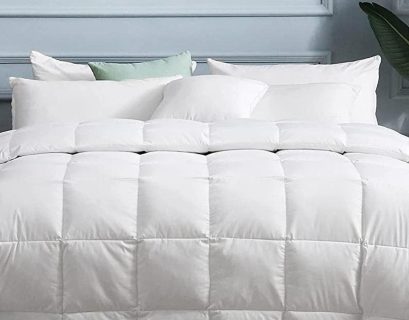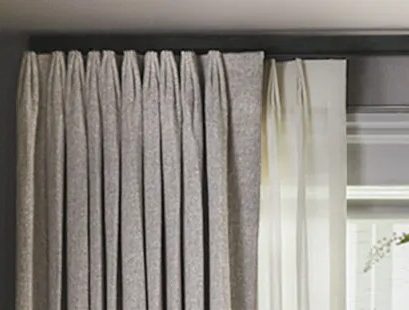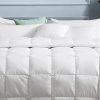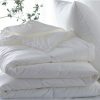Pillows are essential companions on our nightly journey to restful sleep, providing the comfort and support needed for a rejuvenating slumber. However, like all good things, pillows don’t last forever. Over time, they accumulate wear and tear, lose their original loft, and may become a breeding ground for allergens. In this comprehensive guide, we will delve into the question that often lingers in the minds of many: How often should I replace my pillows for optimal comfort and support? Let’s uncover the factors influencing pillow longevity and the signs that indicate it’s time to bid farewell to your old faithful and welcome a new pillow into your sleep sanctuary.
The Lifespan of a Pillow:
The lifespan of a pillow depends on several factors, including the quality of the pillow, the materials used, and personal usage patterns. Here’s a general breakdown:
- Synthetic Pillows:
- Lifespan: 1 to 2 years
- Signs of Wear: Flattening, loss of shape, and reduced support.
- Feather Pillows:
- Lifespan: 5 to 10 years
- Signs of Wear: Compacted fill, uneven distribution, and decreased fluffiness.
- Memory Foam Pillows:
- Lifespan: 3 to 5 years
- Signs of Wear: Permanent indentations, reduced responsiveness, and changes in density.
- Latex Pillows:
- Lifespan: 5 to 7 years
- Signs of Wear: Loss of bounce, surface deterioration, and changes in shape.
- Down Pillows:
- Lifespan: 5 to 10 years
- Signs of Wear: Flattening, loss of loft, and uneven distribution of feathers.
Factors Influencing Pillow Longevity:
- Quality of Materials:
- High-quality materials contribute to a longer pillow lifespan. Pillows made with premium materials tend to resist wear and tear, maintaining their shape and support for an extended period.
- Usage Patterns:
- The frequency and intensity of pillow use play a significant role. Pillows used for extended periods, such as during the day for reading or watching TV, may wear out faster than those exclusively used for sleeping.
- Sleeping Position:
- Individuals who predominantly sleep on their stomachs or sides may experience more compression and wear on their pillows compared to back sleepers. Adjusting pillow loft to accommodate sleeping positions can impact its longevity.
- Maintenance and Care:
- Regular care and maintenance, such as fluffing, rotating, and using protective pillowcases, can prolong a pillow’s lifespan. Additionally, following manufacturer’s care instructions, especially for memory foam and latex pillows, is crucial.
- Allergen Considerations:
- Allergens, including dust mites and mold, can accumulate in pillows over time, impacting both hygiene and air quality. Regular cleaning and using hypoallergenic pillow protectors can mitigate this issue.
Signs It’s Time to Replace Your Pillow:
- Flattening or Loss of Loft:
- If your pillow no longer maintains its original loft and has become noticeably flat, it’s a clear sign that it has lost its supportive qualities.
- Lumpiness or Uneven Distribution:
- The presence of lumps, clumps, or an uneven distribution of filling indicates that the internal structure of the pillow has broken down, compromising its support.
- Permanent Indentations:
- Memory foam pillows, in particular, may develop permanent indentations over time. If these indentations remain even after the pillow is allowed to regain its shape, it may be time for a replacement.
- Allergen Issues:
- If you notice an increase in allergy symptoms, such as sneezing, congestion, or skin irritation, your pillow may be harboring allergens. Washing may provide temporary relief, but over time, allergen buildup may necessitate replacement.
- Changes in Comfort:
- If you find yourself constantly adjusting or folding your pillow to achieve the desired comfort, it may be a sign that the pillow is no longer providing the support you need.
- Visible Wear and Tear:
- External signs of wear, including fraying seams, fabric deterioration, or an unpleasant odor, are indications that the pillow has reached the end of its useful life.
Pillow Replacement Recommendations:
- Synthetic Pillows:
- Replace every 1 to 2 years for optimal comfort and support.
- Feather Pillows:
- Consider replacement every 5 to 10 years, or when signs of wear become apparent.
- Memory Foam Pillows:
- Aim for replacement every 3 to 5 years, or when permanent indentations and changes in density occur.
- Latex Pillows:
- Replace every 5 to 7 years, or when the pillow loses its bounce and shape.
- Down Pillows:
- Consider replacement every 5 to 10 years, or when flattening and loss of loft are noticeable.
Tips for Extending Pillow Longevity:
- Use Pillow Protectors:
- Invest in hypoallergenic pillow protectors to create a barrier against allergens, stains, and moisture.
- Regular Fluffing and Rotation:
- Fluffing and rotating your pillow regularly helps maintain its shape and prevents uneven wear.
- Washable Pillowcases:
- Choose pillowcases that are easy to clean and wash them regularly to maintain a hygienic sleep environment.
- Follow Care Instructions:
- Adhere to the care instructions provided by the manufacturer to ensure proper maintenance and longevity.
- Adjust Loft for Sleeping Position:
- Choose pillows with adjustable loft or different thickness options to accommodate various sleeping positions.
Conclusion:
Achieving optimal comfort and support from your pillow requires a proactive approach to replacement based on individual factors such as pillow type, materials, and personal preferences. Regular assessment of your pillow’s condition and awareness of the signs of wear and tear are essential for ensuring a restful and healthy sleep environment.
By understanding the lifespan of different pillow types and recognizing when it’s time to bid farewell to an old pillow, you can make informed decisions that contribute to your overall well-being. So, the next time you lay your head down to rest, consider whether your trusted pillow is still providing the comfort and support you deserve or if it’s time to embrace the rejuvenating qualities of a new sleep companion.
























